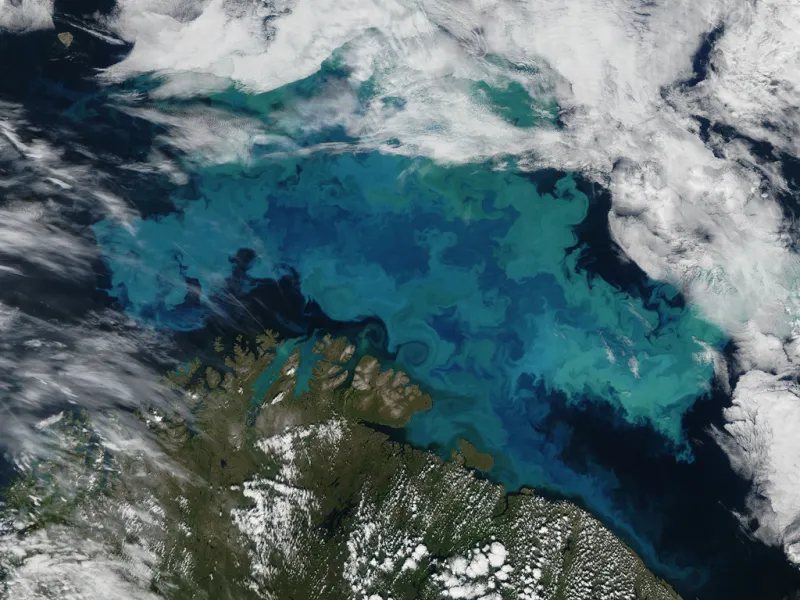Geoengineering Phytoplankton Blooms

The bright, brilliant swirls of blue and green seen from space are a phytoplankton bloom in the Barents Sea. Phytoplankton can bloom like this, rapidly growing and reproducing, because of a sudden increase in nutrients and sunlight. In the process, the phytoplankton absorb carbon dioxide from the atmosphere and, when they die, they sink to the seafloor, trapping the carbon in sediment. Because of this, some researchers want to add nutrients like iron to the ocean to cause phytoplankton blooms, hoping that they will remove carbon dioxide and slow global warming. However, because it's hard to know what the full effects will be, most scientists are hesitant to try this large-scale geoengineering experiment.

